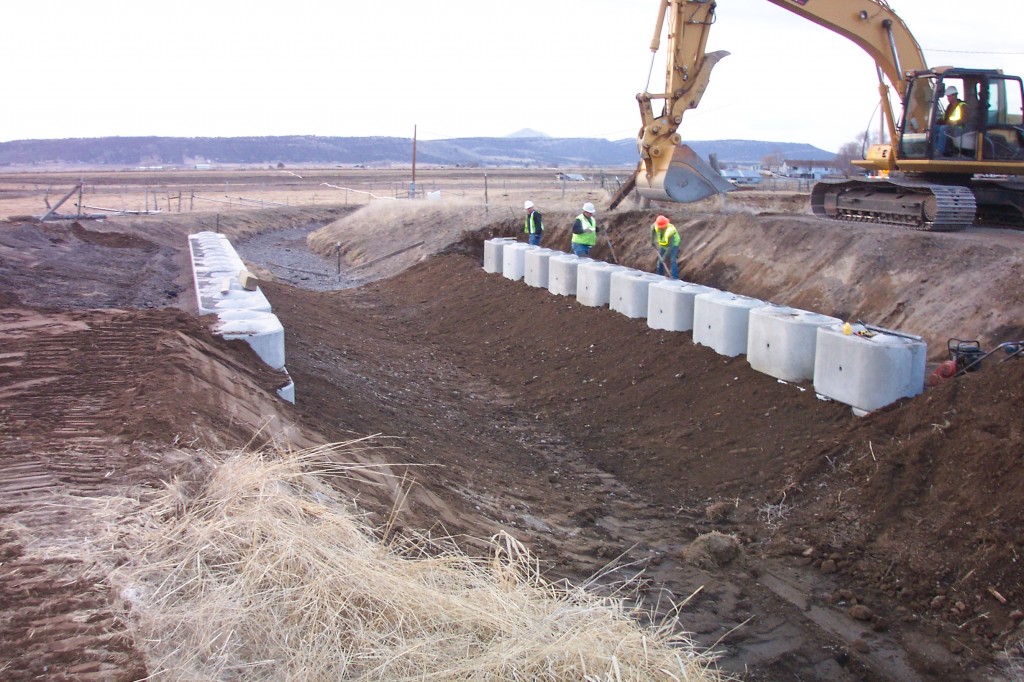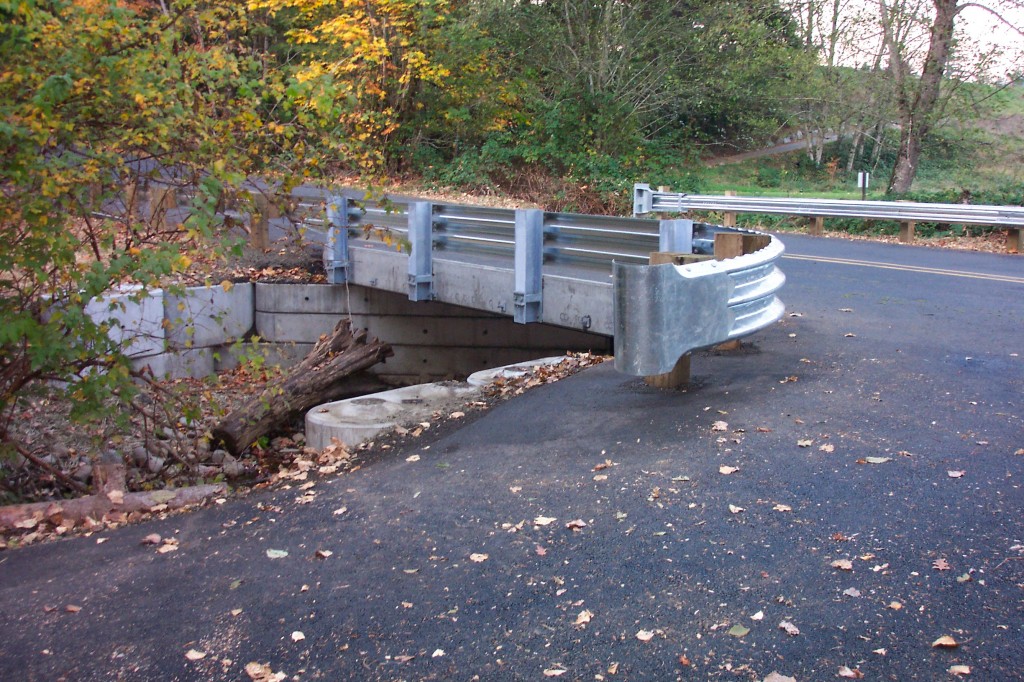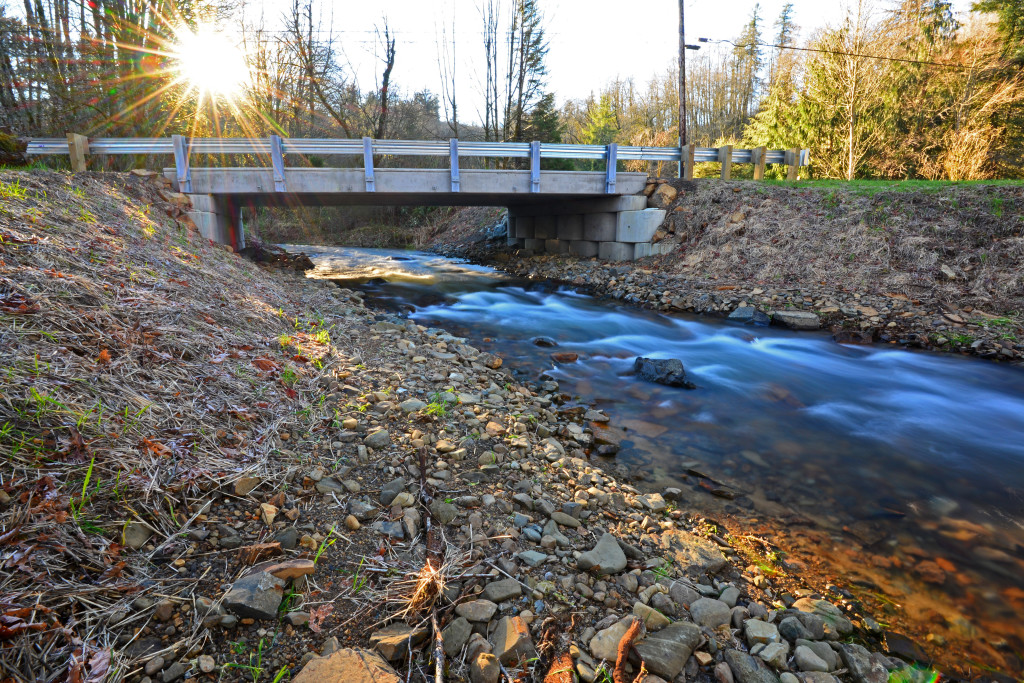 Clackamas County has replaced a lot of faulty stream culverts with bridges – 73 to be exact – but just one of these projects stands out to area government leaders as cutting edge technology.
Clackamas County has replaced a lot of faulty stream culverts with bridges – 73 to be exact – but just one of these projects stands out to area government leaders as cutting edge technology.
Some New York or Los Angeles engineering firm didn’t develop that project –the Wee Burn Creek Bridge near the Resort at the Mountain in Welches –; family-owned, Sandy-based Pacific Bridge & Construction, Inc. created it.
Federal, state and county officials recently honored Pacific’s father-son team, Gene and Steve Copher, for their unique, patented bridge design that saved the government time and money.
The company received a “New Innovations” award earlier this year from the U.S. Forest Service, and was formally recognized by the Clackamas Board of County Commissioners in September.
“We’re really excited about it,” said Gene Copher on receiving the recognition. “We’ve been working really hard on this for several years, and we feel that it’s sort of the best design and product out there. And it’s made right here in Sandy.”
The Wee Burn Fish Passage Enhancement Project –Funded by Clackamas County and an $85,000 grant from the Oregon Watershed Enhancement Board—replaced faulty metal culverts along Wee Burn Creek where it passes under Welches Road.
During heavy rains the culverts overflowed and flooded Welches Road, and during low-water times, the creek flowed beneath the culverts in thin passages that blocked fish.
Unlike conventional concrete bridges that are poured in place, the Wee Burn Bridge is made of interlocking, prefab pieces that were poured and cured offsite in a controlled environment before they were assembled on site in a quick, Lego-like fashion.
“It’s a great bridge design because it allows us to place the footings and abutments first, restore the streambed to our hearts’ content, and then cap the bridge with the roadbed,” explained Pacific Bridge co-owner Steve Copher.
The Copher’s design allowed for a rapid, one-month installation last fall without the use of a crane. Compared with traditional “open-arch” designs, the bridge reportedly said the county an estimated $50,000, while saving local drivers from prolonged road closure.
“We went from multiple culverts to a bridge with a viable stream in four weeks,” said Clackamas County Commissioner Bill Kennemer. “In many ways, it was our best (culvert replacement) effort to date. It could well influence the way culvert replacements are handled nationwide.”
The Cophers believe that Wee burn is just the beginning.
“We keep getting more and more calls,” Gene Copher said, nothing that those calls have come from the Oregon Department of Transportation and the Army Corps of Engineers, among others. “It’s all pretty exciting.”
And the fish like it, too. In a nod of approval from nature, wild Coho salmon spawned on both ends of the bridge a mere 60 days after the project’s completion.






